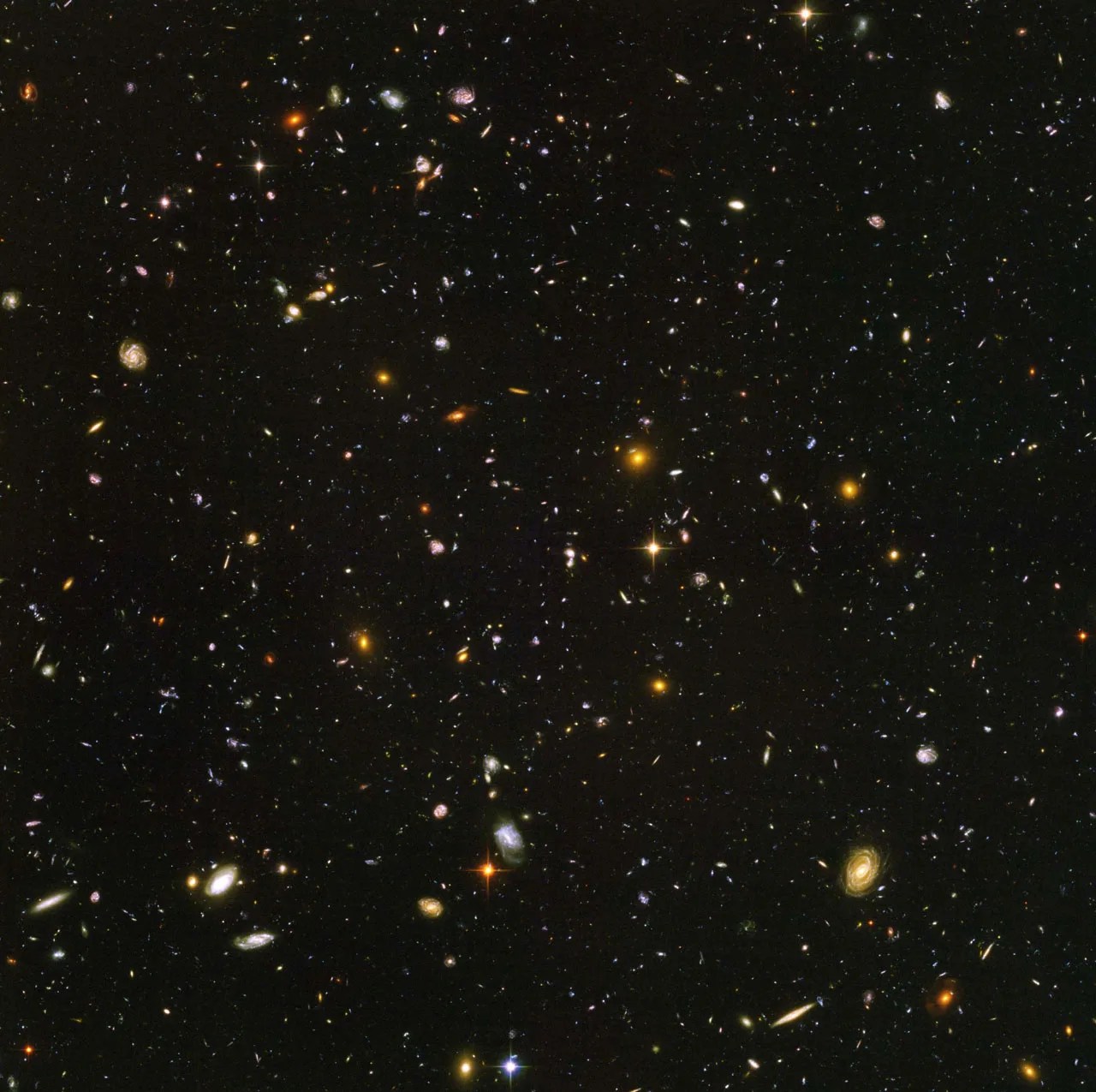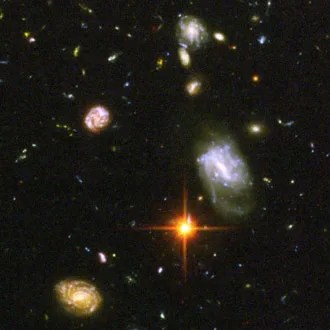4 min read

An estimated 10,000 galaxies are revealed in humankind's deepest portrait of the visible universe ever. View a
of this image, or a slightly farther look with Hubble's infrared camera, in
or
format. Photo credit: NASA/ESA/S. Beckwith(STScI) and The HUDF Team.
How do astronomers know when they have looked too far into space? Maybe when they have run out of galaxies to view.
That hasn't happened yet. There are still far reaches of space that have not been explored by even the most powerful telescopes, innumerable galaxies that have not been seen by human eyes.
But astronomers using NASA's Hubble Space Telescope are getting closer, with new images that reveal some of the farthest galaxies ever seen, from when the universe was just 400 million years old.
(
)
Called the Hubble Ultra Deep Field, the view represents the deepest portrait of the visible universe ever achieved by humankind. The snapshot reveals the first galaxies to emerge from the so-called "dark ages," the time shortly after the big bang when the first stars reheated the cold, dark universe. The new image should offer new insights into what types of objects reheated the universe long ago.
This historic new view is actually two separate images taken by Hubble's Advanced Camera for Surveys (ACS) and the Near Infrared Camera and Multi-object Spectrometer (NICMOS). Both images reveal galaxies that until now were too faint to be seen by ground-based telescopes, or even in Hubble's previous faraway looks, called the Hubble Deep Fields, taken in 1995 and 1998.
"Hubble takes us to within a stone's throw of the big bang itself," says Massimo Stiavelli of the Space Telescope Science Institute in Baltimore, Md., and the Hubble Ultra Deep Field project lead. The combination of ACS and NICMOS images will be used to search for galaxies that existed between 400 and 800 million years (ranging from redshift 7 to 12) after the big bang. A key question for astronomers is whether the universe appears to be the same at this very early time as it did when the cosmos was between 1 and 2 billion years old.
The Ultra Deep Field contains an estimated 10,000 galaxies. In ground-based photographs, the patch of sky in which the galaxies reside (just one-tenth the diameter of the full Moon) is largely empty. Located in the constellation Fornax, the region is so empty that only about seven stars within the Milky Way galaxy can be seen in the image. (
)
The Ultra Deep Field observations represent a narrow, deep view of the cosmos. Looking into the Ultra Deep Field is like peering through an eight-foot-long soda straw.

This galactic snapshot is part of a collage of close-ups pulled from the Ultra Deep Field. View a
of this image, or the
. Photo credit: NASA/ESA/S. Beckwith(STScI) and The HUDF Team.
This galaxy-studded view represents a "deep" core sample of the universe, cutting across billions of light-years. The snapshot includes galaxies of various ages, sizes, shapes, and colors. The smallest, reddest galaxies, about 100, may be among the most distant known, existing when the universe was just 800 million years old. The nearest galaxies -- the larger, brighter, well-defined spirals and ellipticals -- thrived 1 billion years ago, when the cosmos was 13 billion years old.
In vibrant contrast to the rich harvest of classic spiral and elliptical galaxies, there is a zoo of oddball galaxies littering the field. Some look like toothpicks; others like links on a bracelet. A few appear to be interacting. These oddball galaxies chronicle a period when the universe was younger and more chaotic. Order and structure were just beginning to emerge.
The Ultra Deep Field observations began Sept. 24, 2003 and continued through Jan. 16, 2004. The telescope's ACS camera, the size of a phone booth, captured ancient photons of light that began traversing the universe even before Earth existed. Photons of light from the very faintest objects arrived at a trickle of one photon per minute, compared with millions of photons per minute from nearer galaxies.
Just like the previous Hubble Deep Fields, the new data are expected to galvanize the astronomical community and lead to dozens of research papers that will offer new insights into the birth and evolution of galaxies.







